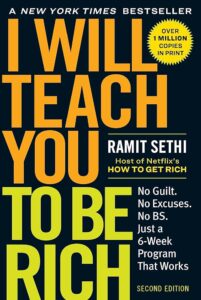
I Will Teach You to Be Rich: No Guilt. No Excuses. Just a 6-Week Program That Works (Second Edition)
Chapter 3: Get Ready to Invest
by DenzelleChapter 3 offers an empowering approach to investing, emphasizing that anyone can start regardless of how small their initial resources are. The author shatters the misconception that a substantial portfolio is necessary to invest effectively, replacing it with the idea that consistent, small actions build significant results over time. By blending humor with relatable analogies, the chapter dismantles psychological barriers such as fear, misconceptions, and a lack of confidence that often hold individuals back from investing.
One of the central messages of the chapter is the immense value of starting early when it comes to investing. Even small, regular contributions can grow exponentially over time, thanks to the power of compound interest. The author illustrates this by comparing individuals who began saving in their twenties versus those who started later, highlighting how time in the market is often more critical than the amount invested.
The chapter stresses the importance of leveraging retirement accounts like 401(k)s and Roth IRAs as foundational tools for long-term financial security. These accounts are presented as essential not only for their tax benefits but also for their ability to provide structure and consistency in saving. By explaining the advantages of these accounts in simple terms, the author makes the process of opening and contributing to them feel accessible, even for those new to financial planning.
The chapter takes aim at common myths that deter people from investing, such as the idea that successful investing requires predicting the stock market or taking high risks. Instead, the author advocates for straightforward strategies like investing in diversified index funds, which offer steady growth without the need for constant market monitoring. By focusing on consistency and long-term goals, this approach makes investing manageable and effective for beginners.
To address the intimidation often associated with investing, the chapter offers practical, easy-to-follow solutions. Automating contributions to investment accounts is emphasized as a key strategy for ensuring consistency without requiring constant attention. Additionally, the concept of prioritizing financial goals—starting with an emergency fund before moving to investments—provides readers with a clear roadmap to begin their journey.
In addition to traditional options, the chapter introduces readers to alternative investment tools like Health Savings Accounts (HSAs). HSAs are framed as dual-purpose accounts that offer tax benefits while addressing healthcare expenses, making them a versatile addition to any financial strategy. By incorporating tools like these into their plans, readers can achieve a more holistic approach to their financial goals.
The author emphasizes that waiting for the “perfect” time to begin investing often results in missed opportunities. Even small steps, such as setting up an automatic deposit of $20 per month, can lead to significant growth over time. This proactive mindset encourages readers to focus on progress rather than perfection, helping them overcome the inertia that often delays financial decisions.
Personal stories and examples are woven throughout the chapter to showcase how individuals from various backgrounds have benefited from starting early and sticking to simple strategies. For instance, one example describes a young professional who began investing small amounts during college and, through consistent contributions, amassed a comfortable nest egg within two decades. These stories make the concepts relatable and motivate readers to take immediate action.
The chapter provides actionable tips that demystify investing for readers, such as choosing low-cost index funds, automating contributions, and focusing on long-term growth. These steps are presented in a way that is easy to understand, empowering even those with no prior experience to start investing with confidence. The emphasis on simplicity ensures that readers feel equipped to take their first steps without feeling overwhelmed.
Chapter 3 closes with a resounding message: investing is not reserved for the wealthy or financially savvy—it’s a tool that anyone can use to achieve financial freedom. By starting early, staying consistent, and focusing on strategies that align with long-term goals, readers can build a secure and prosperous future. The chapter inspires readers to take control of their financial journey, reinforcing that every small step they take today will pay off exponentially in the years to come.


0 Comments